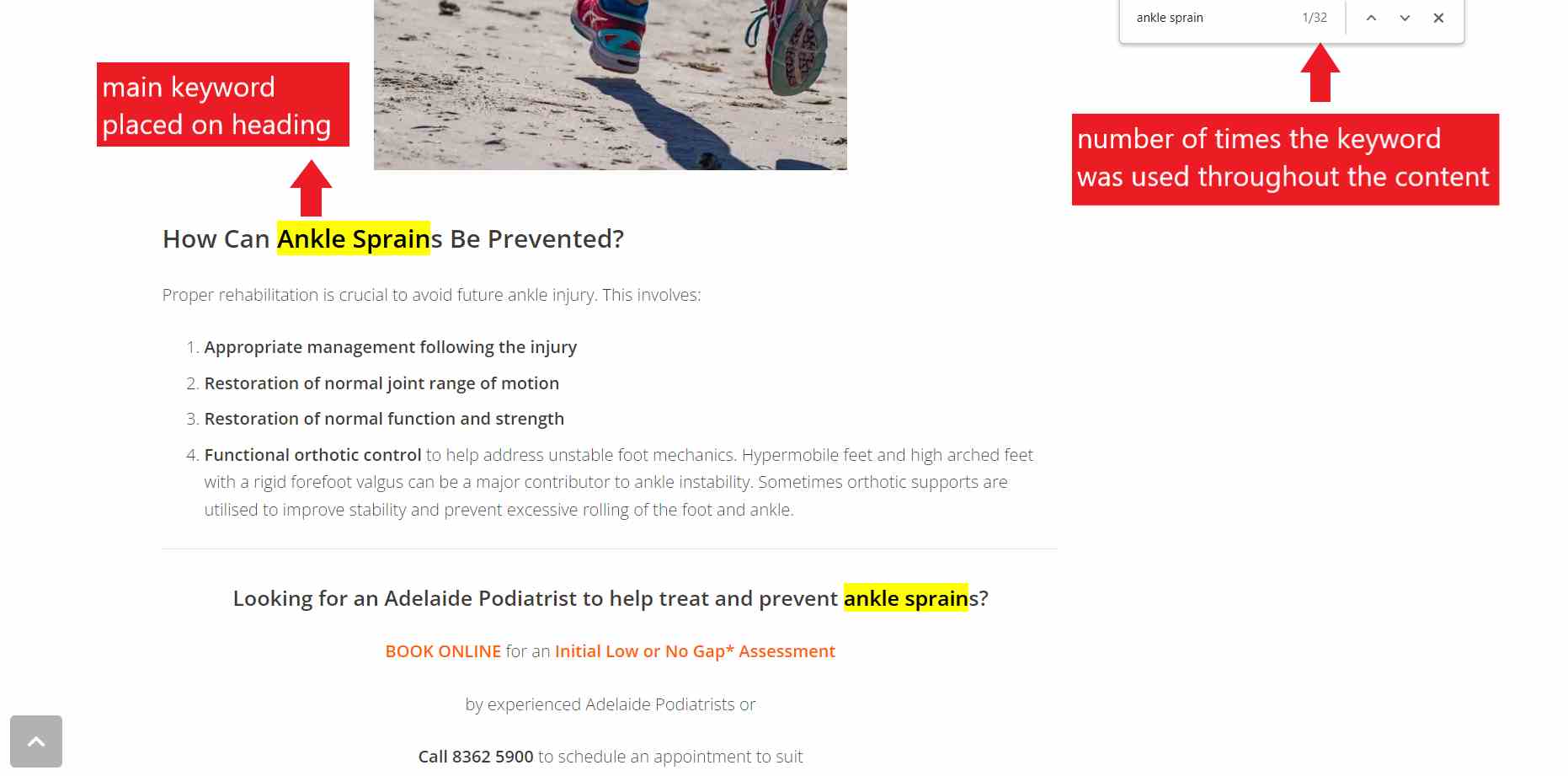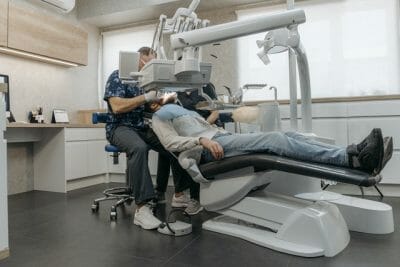What is Search Engine Optimization (SEO)?
Search Engine Optimization (SEO) refers to the process of improving the quality of your podiatry website so that it ranks high on relevant search queries. It has three types which are On-page SEO, Off-page SEO, and Technical SEO.
On-page SEO is when you work on improving the quality of your website so that it ranks high on the Search Engine Results Page (SERP) while Off-page SEO is when you improve the quality of your website by making efforts that are outside your website like guest posting or through social media marketing.
Lastly, Technical SEO is when you focus on improving the technical aspects of your podiatry website so that it ranks high on relevant search queries (e.g. fixing broken links or making your site mobile-friendly)
Table of Contents
ToggleSEO vs. Google Ads: What’s the Difference?
SEO (Search Engine Optimization) is the process of improving your website and online presence so that you rank higher in the organic (unpaid) search results on Google. When someone searches for “podiatrist near me” or “heel pain treatment in Los Angeles,” a well-optimized site can appear on the first page naturally, without paying Google directly. SEO takes time it can take weeks or months to see results but once your site ranks, the traffic is essentially free and sustainable as long as you maintain your SEO efforts.
Google Ads, on the other hand, are paid advertisements that appear at the very top (and sometimes bottom) of Google search results. With Google Ads, you bid on keywords like “foot doctor in Dallas” and your ad will show when someone searches for that term. This method gives you immediate visibility, but you pay every time someone clicks your ad (Pay-Per-Click, or PPC). Once you stop paying, your visibility disappears instantly.
Check out our Google Ads For Podiatrist to know more on how to run Google ads.
Local SEO for Podiatrists
Local SEO is particularly crucial for podiatrists because patients almost always look for care close to home. When someone searches for “podiatrist near me” or “foot pain doctor in Los Angeles,” Google prioritizes local businesses that have optimized their online presence. By focusing on local SEO, you make sure that your clinic appears prominently in these searches, which directly translates into more patient inquiries and booked appointments.
This involves maintaining consistency across your business name, address, and phone number (NAP) on your website and across directories, building localized content that targets specific neighborhoods or conditions, and ensuring that your practice is listed on reputable medical and business directories like Healthgrades, Zocdoc, Yelp, and WebMD. For podiatrists, local SEO is not just a nice addition it is the foundation of attracting patients who are ready to walk through your clinic doors.

Google Business Profile (Previously Google My Business)
One of the most powerful tools for podiatrists to attract local patients is an optimized Google Business Profile, which was previously called Google My Business. This free profile allows your clinic to show up in Google Maps results, the local 3-Pack, and on the right-hand knowledge panel when people search for podiatry services in your area. To make the most of it, your profile should include your clinic’s name, phone number, address, website, and accurate office hours.
You should also upload professional photos of your clinic, treatment rooms, staff, and even patient-friendly educational content to build trust. Listing your services in detail such as bunion treatment, plantar fasciitis care, diabetic foot care, and custom orthotics helps Google understand your expertise. Regular updates, like posting blogs or announcing special offers, show Google and potential patients that your practice is active and engaged. Perhaps most importantly, encouraging satisfied patients to leave positive reviews will boost both your local ranking and credibility, making it far more likely that new patients will choose your clinic over competitors.
Competitive Offer to Stand Out
SEO will bring people to your website or Google Business Profile, but what makes them actually book an appointment is the offer you put in front of them. In a competitive healthcare market, podiatrists need a clear and compelling value proposition that sets their practice apart. This could be something as simple as a free initial foot assessment, discounted custom orthotics for new patients, or even highlighting conveniences like same-day appointments or telehealth consultations for diabetic foot care.
By presenting a strong offer, you immediately give patients a reason to choose your practice instead of scrolling past to a competitor. Your offer should be prominently displayed on your website’s homepage, featured within your Google Business Profile, and shared on social media channels to maximize visibility. The right competitive offer not only helps you stand out but also transforms casual website visitors into booked patients, which is the ultimate goal of any SEO strategy.
Want to learn more about how SEO can help you stay on top of the minds of your potential patients?
SEO Strategies for Podiatrists
Now that you have a background of what SEO is and how your podiatry clinic will benefit from it, we’ll proceed with tips on how you can optimize your website to improve your rank on relevant search queries.
On-page SEO techniques
In this section, you’ll learn tips on how you can optimize your podiatry website so that you can outrank your competitors.
Optimize your title tags, meta descriptions, and headings
The title tag is the headline that appears on search engine results and browser tabs, and it strongly influences whether someone clicks on your listing. For podiatrists, a well-crafted title tag should include both your primary service and location to maximize local search visibility.
For example: “Facts About Flat Feet – Wilmington”. By placing your most important keywords at the front and keeping the title tag under 60 characters, you improve both SEO rankings and click-through rates. Remember, your title tag is the first impression most patients will have of your clinic so make it clear, specific, and patient-focused.
This is what a title tag looks like on SERP:

And this is what it looks like on top of a browser’s tab:
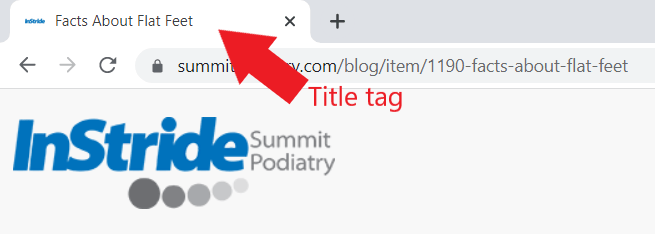
While meta descriptions don’t directly affect rankings, they are vital for encouraging patients to click on your website instead of a competitor’s. A strong meta description should be between 150–160 characters, highlight your main service, and include a call-to-action.
For example: “Flat feet is a fairly common foot condition. The foor appers to be flatter on the sole than it should be, as a result of a dropped arch.” This not only reassures potential patients that you offer the solution they need but also motivates them to take immediate action. Writing unique descriptions for each page ensures that all your services get maximum visibility in search results.
This is what it looks like on SERP:

Headings make your content readable. This divides your blog into different sections which makes it easier for page visitors to skim your content and jump right to the part that they are looking forward to reading about.

Optimize your page URL slugs
A URL slug is the part of your website address that comes after the domain name, and it plays an important role in SEO. For podiatry websites, your slugs should be short, descriptive, and keyword-focused so both patients and search engines understand what the page is about.
For example, instead of using a generic slug like https://westcoastpodiatryinc.com/page123, you should create something meaningful like https://westcoastpodiatryinc.com/heel-pain-treatment-dallas. This not only improves your search engine rankings but also reassures potential patients that they are clicking on a page relevant to their needs. Keeping slugs clean, simple, and free of unnecessary numbers or symbols makes your site look more professional and trustworthy.

Internal Links
Internal linking means connecting one page of your website to another relevant page. For podiatrists, this helps patients easily navigate your services and gives search engines a clear structure of your site.
For example, if you’re writing a blog about “Causes of Heel Pain,” you should link to your main “Heel Pain Treatment” service page. This not only guides patients toward booking an appointment but also spreads SEO authority across your site, making it easier for all your pages to rank. Think of internal links as digital signposts that keep visitors engaged and lead them toward scheduling care.
External Links
While many podiatrists worry that linking to other websites will send patients away, external links to trusted sources actually boost your credibility. By referencing reputable sites like the American Podiatric Medical Association (APMA) or medical journals, you signal to Google that your content is well-researched and reliable.
For example, if you’re writing an article about diabetic foot complications, linking to a clinical study or national diabetes foundation can enhance trustworthiness. External linking shows patients that you are committed to providing accurate, evidence-based information, which can strengthen your professional authority online.
Compress Large Image Files
Website speed is a major ranking factor, and one of the biggest culprits of slow loading times is large, uncompressed images. Since podiatry websites often feature high-quality clinic photos, medical diagrams, or treatment images, these files can quickly add up and make pages sluggish.
By using free tools like TinyPNG or built-in compression features in WordPress, you can significantly reduce file sizes without losing quality. A faster website not only improves your SEO but also ensures that patients don’t abandon your site out of frustration. Remember, even a one-second delay in page load time can lower patient conversions.
Improve Readability Level
The average patient searching for a podiatrist is not a medical professional, which means your content should be written in simple, easy-to-read language. Avoid excessive jargon and instead explain conditions and treatments in terms that anyone can understand.
Tools like Hemingway Editor or Grammarly can help assess readability levels and suggest improvements. Breaking up text with subheadings, bullet points, and short paragraphs improves comprehension. When patients feel like your website speaks directly to them without being overly complicated, they are more likely to trust your practice and book an appointment.
Use proper alt tags
Alt tags are short descriptions you add to images on your website, and they are essential for both SEO and accessibility. For podiatrists, this is an opportunity to include niche-specific keywords while also describing the image.
For instance, instead of labeling an image as “image1.jpg”, you could use “podiatrist treating plantar fasciitis patient in clinic.” This helps search engines understand what the image is about, which can improve rankings in Google Images, and it also makes your website more accessible to people using screen readers. Since podiatry websites often use visuals like X-rays, orthotics, or before-and-after treatment photos, properly optimized alt tags are an easy win for both user experience and SEO.

Optimize Your Website
Website optimization goes beyond keywords it’s about creating a smooth, user-friendly experience that keeps patients engaged. This includes having a mobile-friendly design (since most searches happen on phones), fast-loading pages, clear navigation menus, and easily accessible contact information.
Podiatrists should also include online appointment scheduling features, clear calls-to-action, and visible trust signals like patient testimonials or certifications. A well-optimized website not only ranks higher in Google but also converts casual visitors into loyal patients.
Making Content Skimmable with Bolded Keywords
In today’s fast-paced digital world, many patients skim through content rather than reading every word. To keep them engaged, use bold formatting on important keywords and phrases throughout your content.
For example, highlighting terms like heel pain treatment, podiatrist in New York, or custom orthotics helps readers quickly understand the value of your services without having to process large blocks of text. This not only improves readability but also draws attention to the most important parts of your message, increasing the chances that patients will take action.
Want to start SEO with your podiatry clinic?
Understanding Keywords
In SEO, keywords are the specific words and phrases that patients type into Google when searching for podiatry services. For example, someone experiencing heel pain might search “podiatrist near me,” while another might type “plantar fasciitis treatment in Los Angeles.”
Monthly Search Volume
When evaluating potential keywords, it’s important to consider the monthly search volume, which tells you how many people are searching for that phrase each month. A keyword like “podiatrist near me” may have a very high search volume, indicating strong demand, while something more specific like “custom orthotics for flat feet in Los Angeles” might have fewer searches but be more targeted.
For podiatrists, balancing high-volume terms with niche-specific ones is key. High-volume searches bring more visibility, but lower-volume keywords often represent patients with a stronger intent to book an appointment. By focusing on both, you can attract a steady flow of traffic that is not only large in number but also highly relevant to your services.
Keyword Difficulty
Keyword difficulty measures how competitive it is to rank for a certain search term. For instance, trying to rank for “podiatrist” alone may be extremely difficult because many practices across the country target it. On the other hand, a phrase like “heel pain specialist in Los Angeles” will likely be less competitive, giving you a better chance to appear on the first page of Google.
For podiatrists, targeting lower-difficulty, location-based keywords is often the smartest strategy because it allows you to rank faster and connect with patients in your service area. Instead of spreading efforts too thin on highly competitive terms, focus on achievable keywords that bring in real patients.
Using Relevant Keywords to Your Practice
Relevance is one of the most important factors in keyword selection. For a podiatrist, this means choosing terms that accurately reflect the services you offer and the conditions you treat. If you focus on sports podiatry, your keywords should emphasize phrases like “sports foot injury specialist” or “ankle sprain podiatrist” rather than general foot care terms.
Similarly, if your clinic specializes in diabetic foot management, using keywords like “diabetic foot doctor near me” will attract the right patients. Using highly relevant keywords ensures that the people landing on your website are genuinely looking for the services you provide, which increases conversions and patient satisfaction.
Choosing the Right Target Keywords
Choosing the right target keywords for your podiatry practice involves a mix of relevance, search volume, and difficulty. Start by listing the services you offer bunion treatment, plantar fasciitis care, ingrown toenail removal and then combine them with location based terms like your city or neighborhood.
For example, “bunion surgery in Los Angeles” is far more effective than just “bunion surgery.” Next, evaluate search volume and competition using keyword tools to find terms that bring in patients without being impossible to rank for. The right target keywords are those that not only drive traffic but also convert visitors into patients who book appointments at your clinic.
Long-Tail Keywords
Long-tail keywords are longer, more specific search phrases such as “best podiatrist for heel pain in ” or “orthotics for flat feet in New York.” While they typically have a lower monthly search volume, they often convert at a much higher rate because they reflect patients with strong intent.
Someone searching for “foot doctor” might just be browsing, but someone searching “podiatrist for bunion surgery near me” is ready to make an appointment. For podiatrists, focusing on long-tail keywords is a powerful strategy to attract highly motivated patients who are actively seeking treatment.
Short-Tail Keywords
Short-tail keywords are broader, simpler phrases like “podiatrist,” “foot doctor,” or “heel pain.” These terms usually have high search volume but also very high competition. While they’re important for visibility, relying solely on short-tail keywords is not practical for most podiatrists, especially those in competitive cities.
However, including them alongside long-tail keywords ensures that your clinic covers both broad searches and highly specific ones. A balanced strategy that uses both types of keywords maximizes reach while still targeting patients who are ready to book an appointment.
How to do manual keyword research:
The best way to discover the right keywords is by using keyword research tools that provide insights into what people are actually searching for.
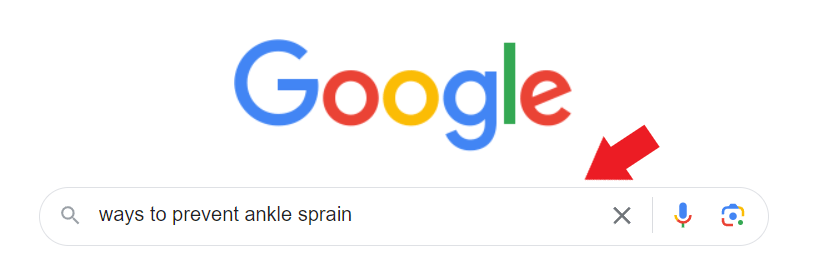 Check each article on the search results page to see how many times the keyword was used, other variations of it, along with its keyword placement throughout the content.
Check each article on the search results page to see how many times the keyword was used, other variations of it, along with its keyword placement throughout the content. 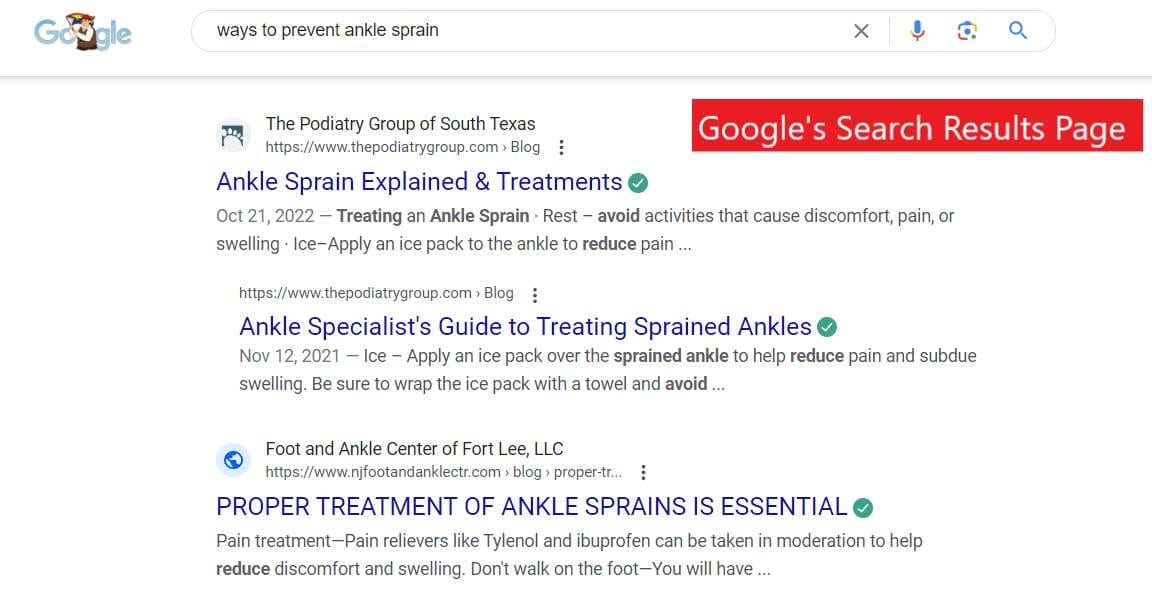
- Press Ctrl +F followed by the main keyword you plan to use on your podiatry blog. This will give you an idea of how many times a keyword was used along with the keyword placement that your competitors use.

From there, you’ll have an idea of what keyword variations to use in your podiatry blog posts which will be helpful in improving your site’s online presence.
Here are some tools that can help you in finding relevant keywords for your podiatry content:
- Browser Extensions
- If you want to immediately see relevant keywords that you can use on your blog posts or landing pages, Keywords Everywhere allows you to see related keywords, search terms that people with the same intended use, long-tail keywords, and a lot more!
- Google Ads Keywords Planner
- If you have an ongoing ad campaign, another platform where you can discover relevant keywords and see forecasts of how they perform is the Google Ads Keyword Planner. This will give you lots of data about your target keyword such as the average monthly searches, keyword competition, top-of-the-page bids, and a lot more! You can even refine the suggested keywords (e.g. branded or non-branded keywords, based on the region, and others).

- Google’s autocomplete prediction
- The autocomplete suggestions consist of predictions about relevant search queries based on a term used by someone using the search box. These suggestions are based on (1) the language used and (2) the location of where the search query came from.

- Google’s related searches section
- The related searches section can be found on the bottom portion of Google’s Search Results Page. Just like auto-complete suggestions, this also contains relevant search queries that your potential patients use.

- Ahrefs Free Keyword Generator
- A tool that generates keyword ideas along with their difficulty score and estimated search volume. This is especially helpful for finding both short-tail and long-tail keywords that your competitors may be missing.

The keyword “podiatrist near me” is an excellent keyword for SEO because it attracts local patients who are ready to book an appointment. Here’s why it works so well:
- High Search Intent
- People typing “podiatrist near me” aren’t casually browsing they likely have foot, ankle, or mobility issues and need a doctor. This means they’re much closer to scheduling an appointment compared to someone just researching foot pain.
- Local SEO Power
- The phrase “near me” signals to Google that the searcher wants local results. This boosts your chances of appearing in the Google Map Pack (local results + maps), which drives calls, directions, and appointment requests.
- Conversion-Driven
- Unlike broad informational keywords (e.g., causes of foot pain), this one is transactional. Searchers are looking for a provider they can actually visit, which makes the keyword highly profitable.
- Mobile & Voice Search Friendly. A huge number of “near me” searches come from mobile or voice queries:
- “Hey Siri, find a podiatrist near me.”
- “Google, where’s the closest foot doctor?”
- Optimizing for this keyword ensures you capture those high-intent mobile users.
- Competitive but Valuable
- Yes, it’s competitive, but ranking for it puts you directly in front of patients who are ready to call, book online, or walk in making the effort worthwhile.
The keyword “podiatrist salary” is not good if your goal is to attract new patients to a podiatry practice. Here’s why:
- Wrong Audience
- People searching for “podiatrist salary” are usually students, job seekers, or career changers not patients looking for treatment.
- This means the traffic won’t convert into phone calls, bookings, or office visits.
- Low Conversion Potential
- Even if your site ranked and got traffic, those visitors are not the ones who need help with foot pain, bunions, or ankle problems. High volume, zero patients.
- Misaligned Search Intent
- “Podiatrist salary” → career/educational intent.
- “Podiatrist near me” → transactional/local intent. SEO works best when you match the searcher’s intent. This keyword attracts the wrong type of intent altogether.
- Dilutes SEO Focus
- If your website starts targeting salary- or career-related content, Google may not view you as a strong local medical provider, but instead as a general information resource. That hurts your local SEO performance for the keywords that actually matter (like podiatrist near me).
Track Keyword Rankings with Serprobot
Once you’ve chosen and optimized for your target keywords, it’s essential to track how well your website is ranking for them over time. A free and simple tool like Serprobot allows you to enter your chosen keywords such as “podiatrist near me,” “heel pain treatment in Los Angeles,” or “bunion surgery specialist Los Angeles” and then monitor where your site appears in Google search results. This helps you measure whether your SEO efforts are paying off and identify areas where you need to improve.
For example, if you notice your clinic is ranking on page two for “plantar fasciitis podiatrist in Los Angeles,” you can create more blog content, add internal links, or optimize your service page around that keyword to push it onto page one. Tracking keyword rankings also allows you to compare your visibility against competitors and make data-driven decisions instead of guessing. For podiatrists, this step is critical because it ensures that your SEO investment leads to real patient growth, not just traffic with no results.

Off-page SEO techniques
In this section, we’ll share tips on how you can improve the quality of your podiatry website through off-page SEO.
Content marketing

Content marketing is one of the most powerful tools for podiatrists to attract and educate potential patients. By creating valuable content such as blog posts, condition guides, videos, and infographics you answer the exact questions people are searching for online. A blog titled “Top 5 Causes of Heel Pain and When to See a Podiatrist” not only helps with SEO but also positions you as a helpful, trustworthy expert.
Over time, a strong content library covering topics like bunion care, plantar fasciitis treatment, diabetic foot care, and sports injuries will draw consistent organic traffic from patients actively seeking solutions. The more high-quality content you publish, the more chances you have to appear in Google search results, attract backlinks, and convert visitors into booked appointments.
Backlinks
One of the strongest ranking factors in SEO is the presence of backlinks, which are links from other reputable websites pointing back to your podiatry clinic’s website. For Google, backlinks act like votes of confidence if other trustworthy sites are linking to you, it signals that your practice is credible and worth ranking higher.
For podiatrists, high-quality backlinks can come from local news outlets, health directories, medical associations, or even collaborations with sports and wellness blogs. For example, if your clinic provides expert commentary in an article about foot health for runners, a backlink from that publication not only boosts your authority in Google’s eyes but also drives direct traffic from people who may become patients.
Guest posting

Guest posting is an excellent way for podiatrists to build both authority and backlinks. This involves writing educational articles for other websites such as local community blogs, sports injury websites, or diabetic care resources where you can share expertise while linking back to your clinic’s website.
For instance, you might write an article for a running magazine about “How to Prevent Stress Fractures in Athletes,” which positions you as a trusted expert and subtly promotes your podiatry services. Guest posting allows you to reach new audiences, gain exposure outside your clinic’s immediate circle, and establish your reputation as a go-to authority in foot and ankle care.
Post on social media

While social media isn’t a direct ranking factor for Google, it plays a critical role in building patient trust, brand awareness, and community engagement. For podiatrists, platforms like Facebook, Instagram, and even TikTok can be used to share educational videos, showcase success stories, and promote local events.
For example, a quick video showing “3 Stretches to Relieve Heel Pain” can gain traction locally, bringing new followers who may later book an appointment. Social media also provides opportunities for targeted ads, allowing you to reach potential patients in your exact city or neighborhood. By staying active and consistent, you keep your practice top-of-mind while reinforcing the authority established through SEO.
Check out our Instagram Reels Marketing for Podiatrists, our TikTok Ads for Podiatrists, and our Social Media Marketing for Podiatrists to know what type of content to make for your practice!
Local Listings
Being listed on local directories and healthcare platforms is essential for podiatrists, as these listings both improve local SEO and help patients find you directly. Sites like Healthgrades, Zocdoc, WebMD, Yelp, and your local chamber of commerce directory are all valuable places to claim and optimize your profile.
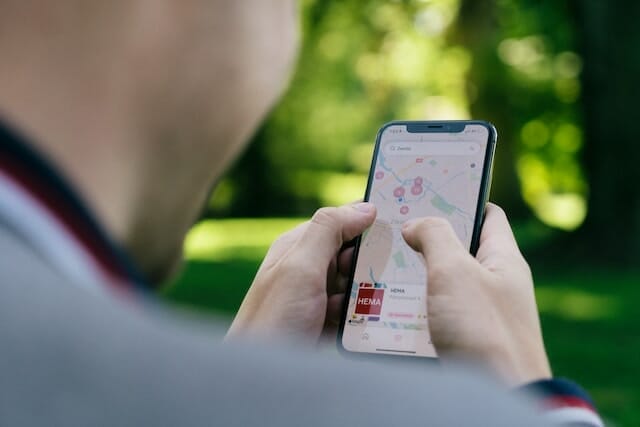
Make sure your NAP (Name, Address, Phone number) is consistent across every listing to avoid confusing Google’s algorithm. Many patients skip Google entirely and go straight to these directories when looking for a specialist, so strong local listings expand your reach beyond search engines.
Participate in online forums

Participating in online forums and community discussions can also boost your visibility and establish your expertise. Sites like Reddit, Quora, or even local Facebook groups often have people asking questions about foot pain, bunions, or orthotics. By providing thoughtful, helpful answers without being overly promotional you can position yourself as the trusted local expert.
For example, if someone asks, “What should I do about sharp heel pain in the morning?” and you respond with professional advice plus a suggestion to consult a podiatrist, you’re not only helping but also indirectly promoting your services. Over time, forum participation can lead to brand recognition, backlinks, and patient referrals.
Video Marketing

Another off-page SEO strategy is by promoting your podiatry services in video format. As of 2023, 91% of businesses use videos as a tool in marketing their products and services. What’s great about this technique is that it’s shareable, can help you get more traffic, and at the same time, can help your rank high on SERP.
Need help optimizing your podiatry website?
AI SEO (aka LLM SEO, GEO, GSEO, ChatGPT SEO)
The world of search is changing rapidly, and it’s no longer just about ranking on Google. With the rise of AI-driven search tools like ChatGPT, Google Gemini, and Perplexity, patients are increasingly getting their answers directly from AI rather than browsing through a list of websites. This is often referred to as AI SEO, or sometimes LLM SEO, GEO, GSEO, or ChatGPT SEO—all terms that describe optimizing your content so that AI-powered tools cite or recommend your clinic as a trusted source of information. For podiatrists, this is especially important because patients searching for things like “Why does my heel hurt when I wake up?” may now see an AI-generated answer that summarizes multiple sources. If your practice isn’t included in that ecosystem, you’re missing potential patients.
What is AI SEO?
At its core, AI SEO is about making your content valuable not only for humans and Google but also for large language models (LLMs) that power AI assistants.
These AIs scan the web, analyze millions of documents, and provide users with instant summarized answers. To be cited or surfaced in these answers, your content needs to be original, authoritative, and up-to-date. Unlike traditional SEO, which rewards technical optimization and link-building, AI SEO rewards fresh, unique insights that add value beyond what AI already knows.
Similarities with Traditional SEO
AI SEO shares many similarities with traditional SEO. Both require:
-
High-quality content that is clear, helpful, and relevant.
-
Strong authority signals like backlinks, reviews, and local citations.
-
Proper on-page SEO (keywords, headings, schema, etc.).
-
Consistency in publishing, so your site stays fresh and active.
In both systems, the goal is the same: to prove that your website (or clinic) is trustworthy, authoritative, and useful to searchers.
Key Differences
Where AI SEO differs is in how content is evaluated. Traditional SEO looks at keywords, ranking signals, and backlinks, while AI search tools prioritize originality and informational value. If your content looks like every other podiatry blog on the internet, it’s less likely to be pulled into an AI-generated answer.
But if you provide new insights, local expertise, case studies, patient stories, or video content, AI has a reason to prioritize you. In short: the more unique and valuable your content is the kind of information AI doesn’t already “know” the higher your chances of ranking in AI-driven results.
-
Content that’s generic or repetitive = less likely to be included.
-
Content with fresh expertise, real-world examples, or local relevance = more likely to be cited.
Role of Videos & PR Articles
AI also uses multiple content formats, not just blogs and websites. YouTube videos are a powerful SEO tool because AI systems often pull summaries from them when answering medical or health-related queries.
A short, well-produced video on “3 Simple Exercises for Plantar Fasciitis Relief” could get surfaced in ChatGPT or Gemini responses. Similarly, PR articles and press mentions help because AI models are trained on news sources and reputable publications, so getting featured in your local paper or an online health magazine can boost your authority in the AI ecosystem.
Different AIs Prioritize Different Things
It’s also important to understand that not all AI search engines are the same:
-
ChatGPT tends to prioritize well-structured, authoritative blog posts, expert answers, and conversationally written guides.
-
Gemini (Google’s AI) leans heavily on Google Search signals, prioritizing websites that already rank well in traditional SEO, as well as schema markup and structured data.
-
Perplexity favors real-time citations and sources, meaning it is more likely to link directly to your website if your content is current and authoritative.
These priorities are not fixed they change constantly as AI tools update their models. That’s why podiatrists need to stay adaptable and continue producing quality content in multiple formats.
If you focus on good, traditional SEO practices such as publishing unique, valuable content, earning backlinks, and staying active online you’ll naturally position yourself well for AI SEO too. The key difference is that you should also think about how AI tools read, summarize, and cite your content.
For podiatrists, that means not only writing keyword-optimized blog posts but also sharing real patient insights, case studies, videos, and community contributions that make your expertise stand out in a world where AI is rewriting the search experience.
Technical SEO techniques
After learning the tips on how you can improve the rank of your website through off-page SEO, in this section, you’ll find out more about the technical aspects that can be improved in your podiatry website.
Backlinks
One of the strongest ranking factors in SEO is the presence of backlinks, which are links from other reputable websites pointing back to your podiatry clinic’s website. For Google, backlinks act like votes of confidence if other trustworthy sites are linking to you, it signals that your practice is credible and worth ranking higher.
For podiatrists, high-quality backlinks can come from local news outlets, health directories, medical associations, or even collaborations with sports and wellness blogs. For example, if your clinic provides expert commentary in an article about foot health for runners, a backlink from that publication not only boosts your authority in Google’s eyes but also drives direct traffic from people who may become patients.
You can use Ahrefs free backlink checker.

Make your podiatry website mobile-friendly
65% of global traffic comes from mobile devices. With that, you have to make sure that your podiatry website is not just usable for desktop users but even for mobile users. You don’t want your page visitors to leave your site without taking action because the font size is too small or pop-ups are not automatically scaled for mobile devices.
To test if your podiatry website is mobile-friendly, use this Mobile-friendly test. You just have to enter the URL of your podiatry website and click “Test URL.” 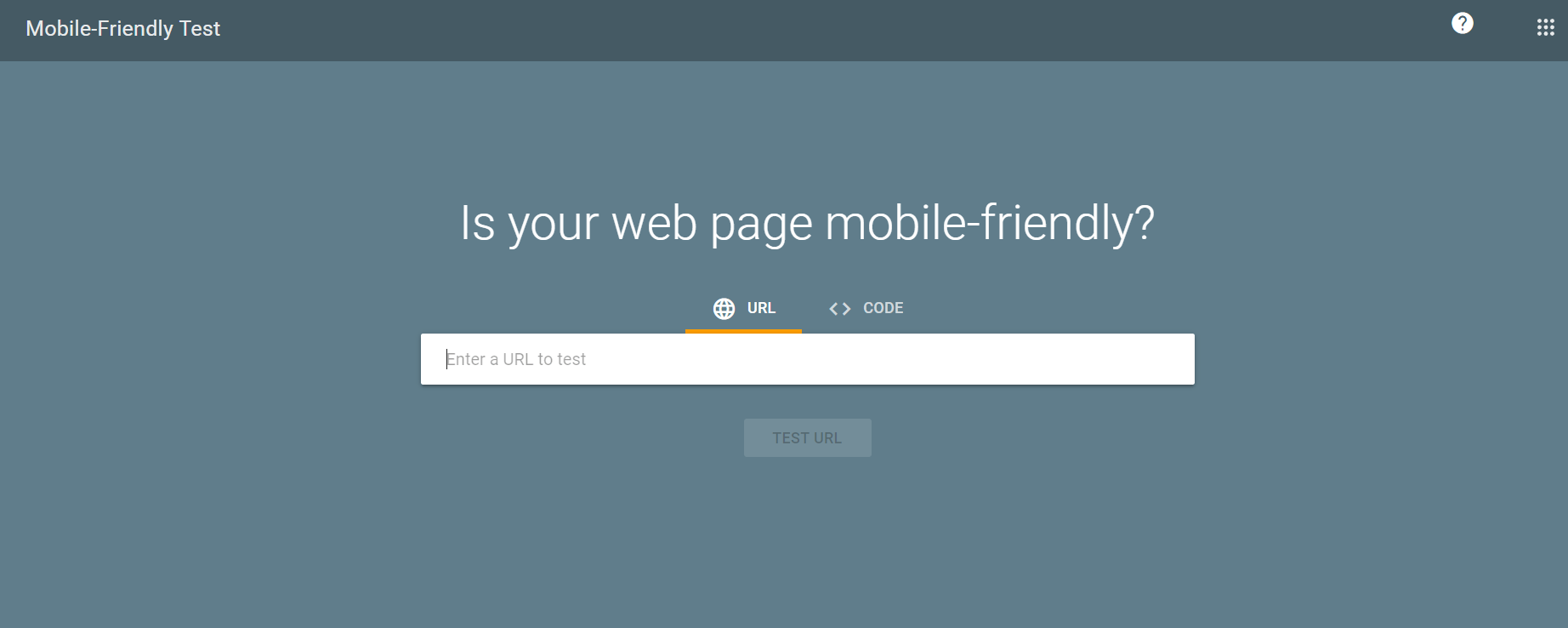
Then, you’ll see the test results after a minute or two.
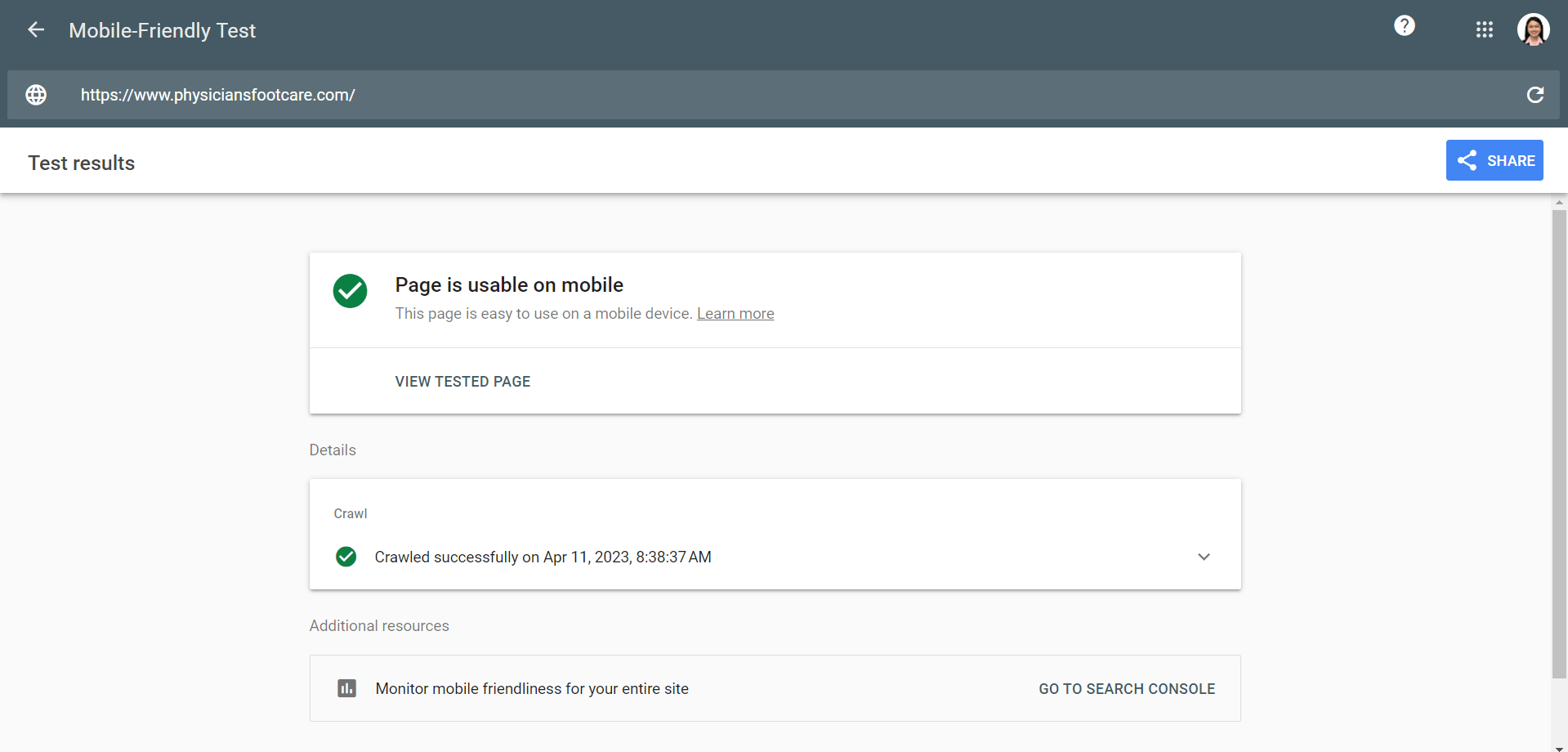
Optimize your landing pages
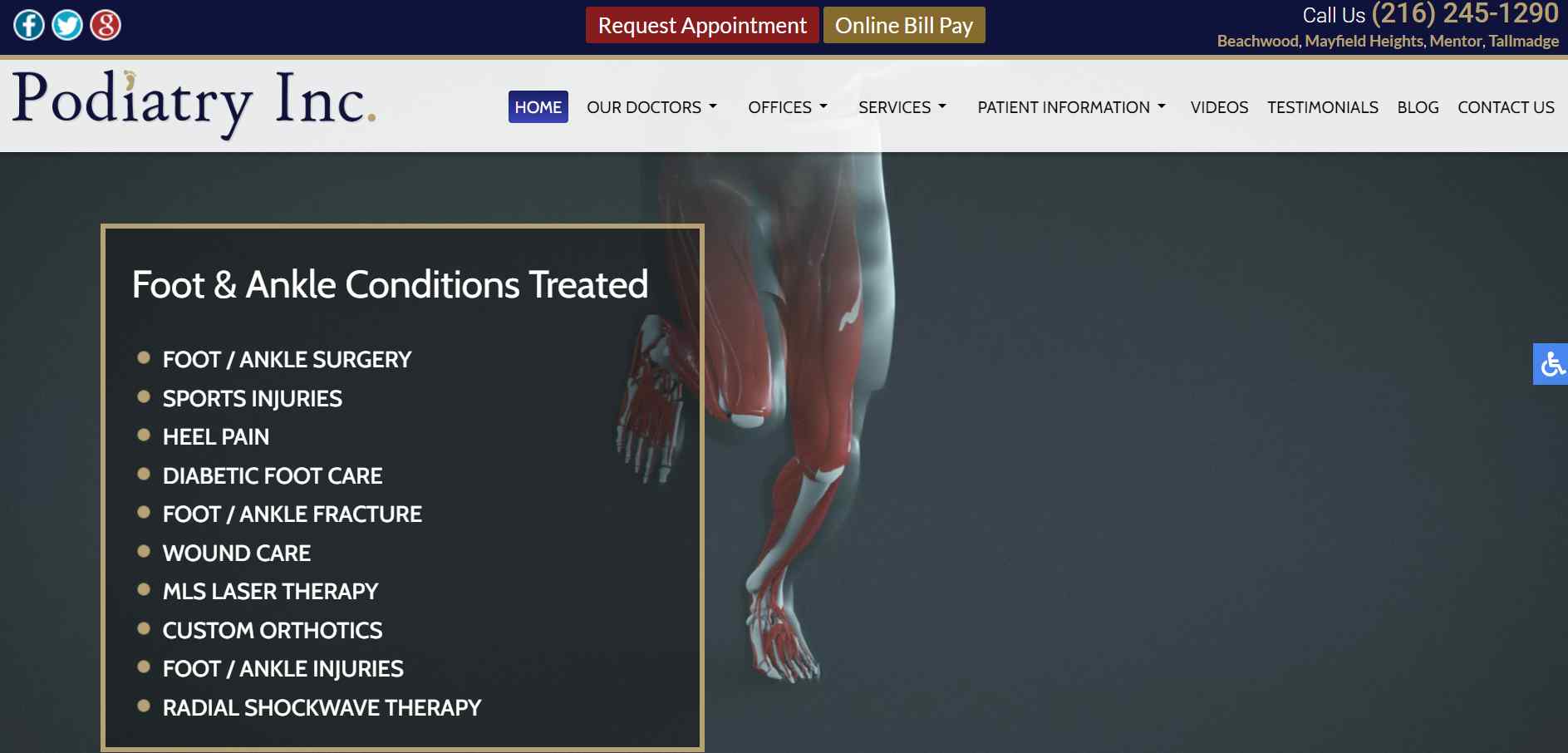
Landing pages are where page visitors “land” after clicking your website from the search results page. The reason why you should optimize your podiatry clinic’s landing pages is that it increases the number of conversions you have on your site. When done right, it can help you get more new patients!
Mobile-Friendly Website
Most patients search for healthcare providers on their smartphones. If your podiatry website isn’t mobile-friendly meaning it doesn’t resize, load, and function well on smaller screens you’re likely losing out on appointments. Google also uses mobile-first indexing, which means it evaluates your mobile version first when deciding rankings.
Keyword Cannibalization
Keyword cannibalization happens when multiple pages on your site target the same keyword (for example, “heel pain treatment”). This can confuse search engines and cause your site to compete against itself. Instead, consolidate overlapping pages into one strong, comprehensive resource to boost your authority for that keyword.
Improve your page loading speed

Page loading speed matters (a lot less than people think it matters but it still matters a little). Especially if you want your future patients to stay longer on your podiatry website.
The longer the page loading time, the higher the bounce rate.
Use the eye test though because some of the tests like PageSpeed Insights are pretty inaccurate.
If you go to a site itself, it’ll load the site fast but on PageSpeed insights it’ll say it’s slow. It’s because PageSpeed insights use the largest contentful paint which for a lot of sites, loads most of what users see immediately and has a few hidden things that they load later.
A lot of speed tests are inaccurate because it is based on the last hidden thing that loads in when that doesn’t affect user behavior or bounce rate. Different speed tests have their own definition of “contentful paint” and a site might load to what your eye sees as fully loaded but to the speed test it’s not “contentful paint”. This is why you’ll see a lot of sites that are slow according to speed tests but have no problem ranking.
This is also why some people game the speed tests and just have something random thing load fast to hit the “contentful paint” checkmark but in reality actual site loads really slowly.
Analytics and Monitoring Your Website
Tracking your SEO progress is essential. Tools like Google Analytics and Google Search Console let you monitor how patients find your podiatry site, which keywords are driving traffic, and where you may be losing visibility. By reviewing analytics, you can adjust your SEO strategy, fix underperforming pages, and double down on what’s working.
Fix dead links

Deadlinks refer to pages on your podiatry website that are either deleted or moved to another location. Having lots of dead links on your site is bad for SEO.
One of the reasons why you should regularly scan your website for deadlinks is that it will lead to frustrated visitors. When people click on a link that brings them to a page that is blank or is no longer there, they are more likely to leave that page and look at other websites instead.
To prevent losing valuable traffic on your podiatry website, use Google Search Console. Not only will it provide you with dead links but it will also give you an idea of the issues that you might want to fix on your site (e.g. indexing issues).
Check your website for duplicate content
Duplicate content is when you have the same content on different pages on your podiatry website. Having duplicate content on your website can cause problems to your website which include negatively affecting your SEO efforts.
This is because when your page has several pages that have almost the same content, it makes it hard for search engine crawlers to decide which page should rank high. This will result in the other page losing potential traffic and will hurt your rank on search engines.
You can use Semrush to check which pages on your podiatry website rank for the same keyword, get real-time performance reports, and identify what rank you are on search engines like Google, Bing, Yahoo, and YouTube!
Make sure your website is secure

Last but definitely not least, you have to make sure that your podiatry website has an encrypted connection. Google favors websites that provide a secure connection compared to those that don’t. So, if your website is still using HTTP:// instead of HTTPS://, you might want to install an SSL certificate on your web hosting account.
Unsecured websites drive potential patients away from your business. Not just that, but with an unsecured connection, your patient’s personal information (e.g. credit card details, login details) might be stolen by third parties.
Key takeaway
Search Engine Optimization is a continuous process. Although it takes time before you see results, using the right strategies can help you achieve long-term success.


